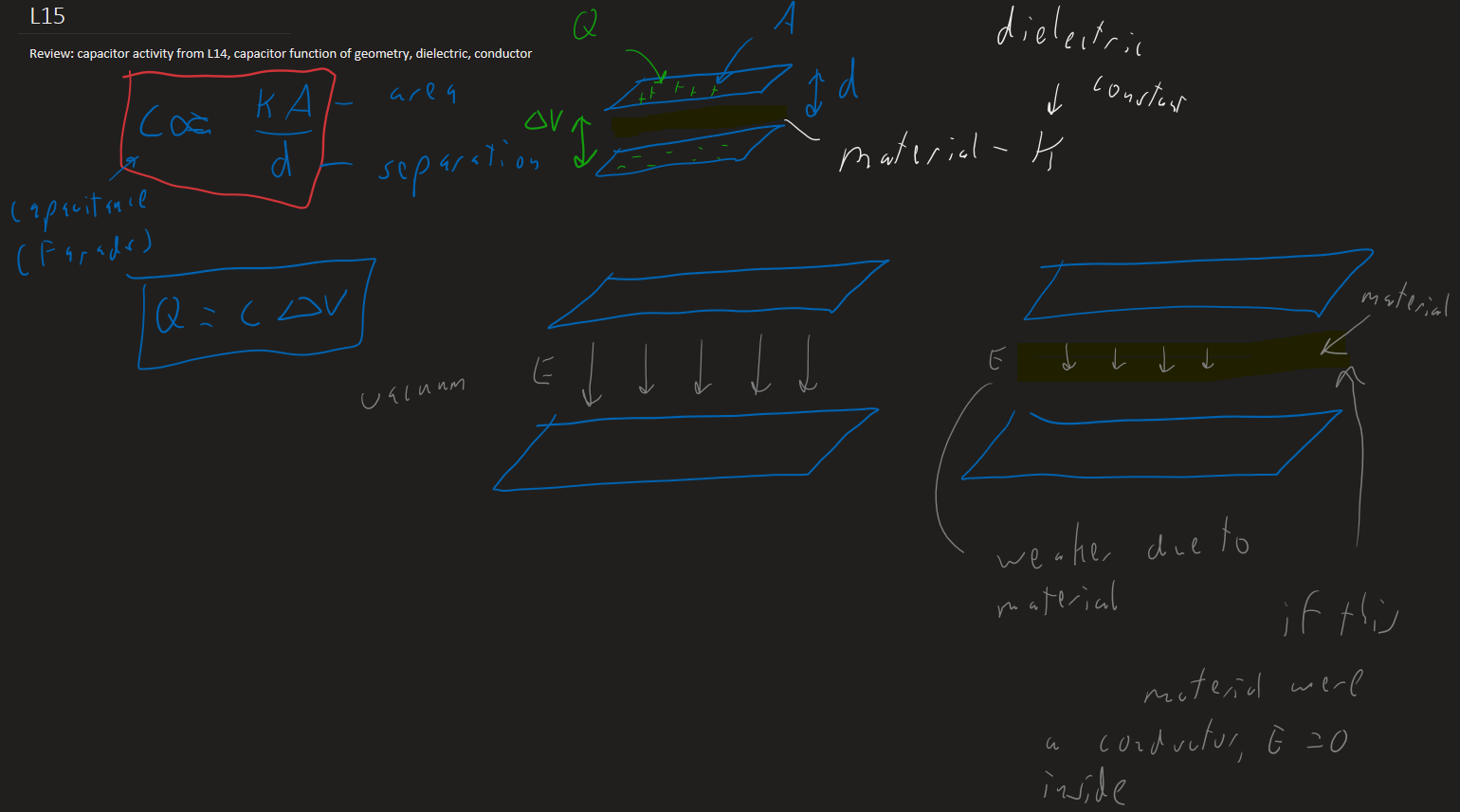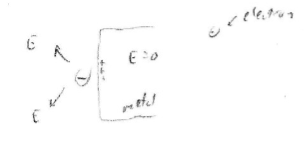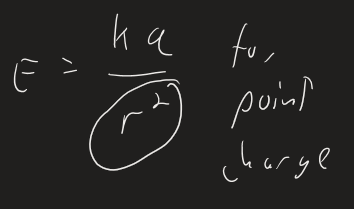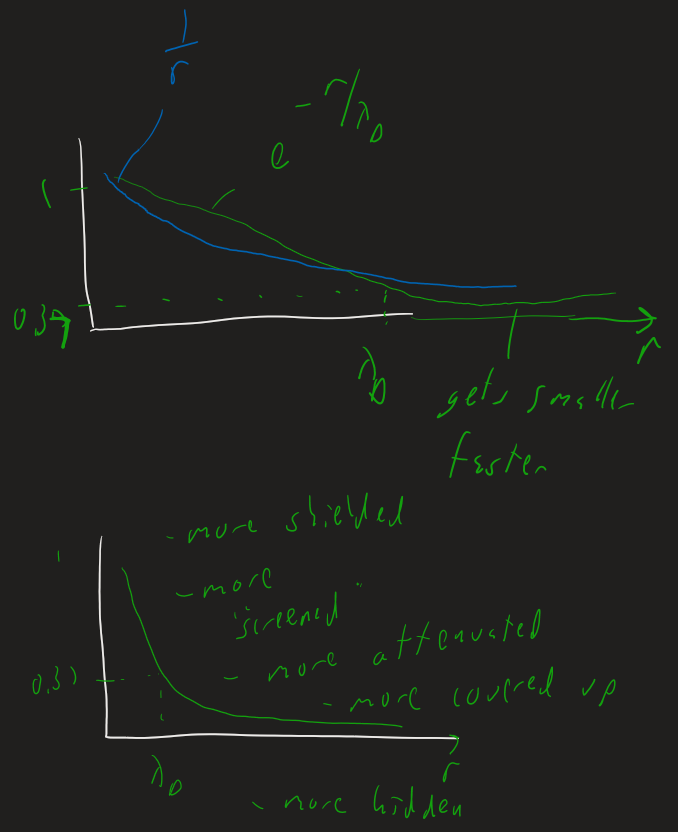Lecture 15
Readings
http://umdberg.pbworks.com/w/page/51186725/Debye%20length

Conductors , Process
Process
In metal, many electrons are available.
- They are free to move
If you put a charge inside a metal, or near a metal, these free electrons rearrange so as to completely cancel any electric field inside the metal:

- charges in metal are basically "absence of electrons" at that location
Debye Length
In salt solution, there are quite a few free charges, in the form of ions now.
Both + and - charges now
- Not quite as many as in a conductor
- These ions are affected by thermal motion.
If you put a charged object into a salt solutions, ions form a "cloud" around the object, which partially cancels the electric field that the charged object would have caused.
- In a metal, the electric field was perfectly canceled


Without a salt solution, say in a vacuum, the electric field gets weaker as
With this cloud present in a salt solution, it will get weaker even faster as
There is a quantity called the Debye Length which describes how fast (at what distance) the electric field gets weaker
The derivation is complicated
Essentially it's a balance between potential energy and thermal energy
Potential energy is due to:
- positive charge in above picture
- Counter-ions (ions with opposite charge compared to object) being attracted to the object; and
- Counter-ions being repelled by each other when they all try to crowd around object
Thermal motion/entropy wants to keep all the ions evenly spread out.
The result is that the electric field ( and electric potential also ) fall off according to:
E field falls off a little faster than this
This equation indicates that if the distance from the charged object is
Compare this to vaccum ( no salt solution ).
- There, electric potential
- There, electric potential
- Where z = charge per ion and c = concentration of ions
- As
- As
- As
- Another way of thinking of this is that the charges on an object ( or more commonly charges on some molecule ) are "screened" in a salt solutions
- The effects of the charged object are "partially covered up" or "attenuated"
